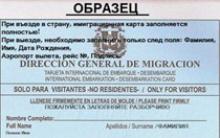Having disassembled the coin albums, we realized that contact with air gradually devalues the coin, since the oxidation process can greatly change the color of its surface. A dark coin, even without a single scratch or nick, will no longer be considered the "Unc" level. And on subsequent sale, its price will be noticeably lower than that of its sisters, who display an undisturbed golden sheen, as if they had just left the mint.
For the national anniversary, the loss of the brilliance of the brass ring of bimetallic tens and the darkening of steel tens with a brass coating are critical. Therefore, most of the questions related to the selection of capsules refer specifically to these coins. We find out the exact diameter of the coin with a vernier caliper. Experts warn against using other measuring devices such as a tape measure or a ruler, as they can scratch the surface of the coin, forever knocking it out of the "UNC" category. Since a caliper is not in every home, and if there is, then there is a risk of spoiling the edge of a valuable specimen, reference information is also quite suitable. Looking into our catalog, you can find out without measurements that the diameter of a bimetallic tens is 27 millimeters, and for a steel tens, its value will be half a centimeter less (22 millimeters).
Plastic tubes for coins

The well-known question "Which came first: the chicken or the egg?" can be paraphrased in "Which came first: tubes or capsules for coins?" There will not be a long historical digression into ancient times, since plastics were invented not so long ago. Collectors have long ago gotten used to using plastic round containers for storing duplicates. It remained to wait for someone to make these containers transparent and fit the diameter of the most common coins. Tubes are used exclusively for storage, not for displaying coins. When choosing a tube, pay attention to the tightness of its lid. Particular attention should be paid when loading coins into the tube, so as not to damage the specimens.
Inner and outer diameter of the capsule

There are some nuances when choosing a capsule. If you take a capsule with an inner diameter of 27 millimeters for a bimetallic ten, the coin can lie so tightly pressed against the walls that it will be impossible to get it out of there. Rather, to free the coin, you have to break the capsule. This does not frighten those who treat capsules as a consumable at all. The capsule makers have designed the capsule so that it breaks without damaging the coin. The mints, when packing their products into capsules, adhere exactly to the strict correspondence between the coin diameter and the capsule inner diameter.

A different strategy is chosen by those who consider the capsule to be as valuable an asset as the coin stored in it. Then a capsule is selected, whose inner diameter is a millimeter larger than the coin. In this case, the coin is easily retrieved. But it is worth noting that this storage method is not effective with the constant transfer of the copy, since the coin in motion along the capsule can receive microdamage.
However, manufacturers often indicate not the inner but the outer diameter of the capsule. Calculations are easy here. Well-known firms adhere to the rule that the outer diameter differs from the inner diameter by six millimeters. The diameter is graduated in 0.5 mm increments (27 mm, 27.5 mm, 28 mm, and so on).

What if the coin does not have the same diameter as the inside diameter of the capsule? Take, for example, the billon coins of the pre-revolutionary period. A dime has a diameter of 17.27 millimeters, a five-kopeck piece - 19.56 millimeters, a two-piece one - 21.8 millimeters. Only experience with the products of a particular manufacturer will help here. It is quite possible that a dime will fit tightly into a seventeen-millimeter capsule at a certain pressure from above, but the same capsule of another company will not let this coin into itself. But when choosing a 17.5 millimeter capsule, you can find both the dense occurrence of the coin and its obvious bumping when the capsule is shaken.
Capsules with inserts and square capsules

Previously, the elimination of bumpiness was provided by exotic methods like a cotton ball. Now capsules are produced, in which there is a whole arsenal of internal linings, the use of which allows you to tightly fix the coin.

The same problem is solved by using square capsules, where the diameter of the hole of the inner insert varies. The inner insert is often made of elastic materials to ensure a good insert for the coin. As collectors say, there is only one drawback of such capsules: the insert interferes with seeing the coin edge. Themselves square capsules can be inserted into the cells of a special album, like holders.
Coin tablets

Coins in capsules look more representative on specialized tablets with a substrate. We can say that the tablet is a mini-showcase. There are plates with a backing and a sealed lid, representing a kind of large capsule.
Mini-tablets are used by mints to colorfully decorate sets of themed coins. The kits can be kept in simple plastic tablets. Here, unfortunately, the issues of the safety of coins are very relevant. A large number of annual sets of the State Bank of the USSR are known, the coins in which are hopelessly damaged due to the antineutral characteristics of plastic.

The tablets with a velvet backing turned out to be more effective. Thus, the sets of Olympic rubles and silver of the Olympics-80, held in Moscow, are presented. It should be noted that here, too, the manufacturers did not take care of the capsules, so silver is often put up for sale darkened. The most preferred combination is Capsule + Tablets. This is how collectible sets of modern weather patterns are formed.
The next step is to unite the tablets into the Münzkabinet, but another article on our site will tell you about this stage of the collection evolution. But before that, we advise you to visit the "Accessories" section of our store, where you can study in detail the various types of capsules and immediately purchase a set of the appropriate size for your coins.
Collecting coins - numismatics - is not only interesting, it is also quite informative. Any self-respecting numismatist thoroughly knows everything about the history of his coins, which means that he often "wanders" through the history of the states where they were issued.
Such a hobby truly deserves respect! But it also requires considerable expenses. And it's not just the cost of monetary units. Even the stock book (a special album for storing them) is quite expensive. For novice numismatists, there is a way to avoid the initial large expenses - to make a do-it-yourself album for coins. How? We will tell you now!
For this you only need diligence, desire and very inexpensive materials. Moreover, another important aspect of a self-made album - you can make the width and depth of the cells completely different, because the coins are also different in value and size.
Necessary materials
The main components and tools for a quality holder for your coins with your own efforts and hands:
- sheets of white paper, the most common A4 format;
- metal ruler;
- dark and bright marker;
- office files (the denser ones are better);
- binder folder;
- ordinary soldering iron;
- good knife and scotch tape;
- hard paper clips.
Everything is quite inexpensive and can be bought at any stationery store.
Highlights in making your album for storing your coin collection
We take a paper sheet, carefully draw it with a marker into the squares that are needed for coins. You should know that the dimensions of these squares should always be slightly larger than the diameters of your money - after soldering, the squares will shrink a little in size, and this must be taken into account. When you already have pennies of different sizes, there are two options for placing the squares:
- one row for those coins that are larger in size, the next row for smaller units;
- one of the sheets is made for kopecks of one size, the next for another size, and so on.

Then everything is the same as in the previous version: we draw a paper sheet, put a sheet drawn in advance on each page of the card holder, put a sheet of cardboard under it and draw it along all the lines with a soldering iron.
We cut the finished cells from the back. And for greater convenience of storage and "admiring" each coin, you can insert squares cut from white cardboard into the cells. Then tape the cuts with tape. But then the coins will be visible only from one side, in order to see the other side, they will need to be removed. But the album itself will become tougher.
You will clearly see the whole process in the video:
You have learned how to make a do-it-yourself coin album in two simple ways. However, do not forget about such an important thing as the safety of collectible coins in proper conditions. If you are a beginner numismatist, this is the best option for you to start your own collection. When the volume becomes much larger than a couple of home-made stockbooks, then you will need real and professionally made albums, in which these special storage conditions will be fully observed.
In the meantime, try to make an album for storing coins with your own hands, start developing your collection, and good luck!
Here's an album you can make with your own hands from scrap materials: 




Tools and accessories that I used.
(If you have punches or have the opportunity to make them, then the task becomes easier for you :)
1
... a metal rail (a guide for a circular knife (2) and using the same rail, preheating with an iron, I squeeze out even folds on the cover - the film melts, takes the desired shape, see photo [I had this little thing :)]
2
... circular knife for cutting cardboard
[sold at the hardware store as a linoleum knife]
3
... Circular knife OLFA OL-CMP-1 for cutting round holes
[sold in shops: modeling, some household and for artists and designers]
(If you have punches or have the opportunity to make them, then the task becomes easier :)
4
... An ordinary clerical knife (I cut off the self-adhesive film with it)
5
... Hammer
6
... Glue "Moment" for gluing cardboard
7
... Semicircular file, medium coarseness (I process, level the edges of the holes after cutting with a circular knife)
8
... Fittings: corners and bolts (ordered in the internet from BASK +)
9
... Pencil
10
... Acrylic paint "gold" (I paint all open areas of cardboard with it) [can be bought in goods for artists)
11
... Cotton swab, I apply paint to it
12
... Clamp (I clamp the rail (1) for her when cutting cardboard)
13
... Punch 5 mm (I punch holes for the bolts and for the "ear" for easy removal of the capsule, see photo above)
14
... German dense films under the skin (d-c-fix, Klebert. In the album 1812 I used black and red leather d-c-fix. (Previously I used vinylis-leather on the cover, but it's hard to work with it).
[self-adhesive films need to be looked for in the wallpaper departments, although the sellers of Chinese shirportreb like to sell - such a film will not work]
15
... Ruler 
For the production of the album, 2.5 mm thick hardboard is used, which can be purchased in art stores. Usually sold in 900x700 sheets.
Now in detail on the manufacture of the sheet:





Cover production in detail:



After the cover has been made, the corners can be installed (23x4.0 yellow)
Numismatics (collecting coins and paper money) is still considered one of the most popular hobbies. Someone just loves to collect old coins, someone brings the newest copies from travel and business trips. Experienced collectors even buy out the rarest coins on purpose, trying to increase their collection with the rarest pieces. In this case, sooner or later the question will appear: how to preserve all this wealth? Not every box and not all cases are suitable for this purpose. A faithful friend of a philatelist and a numismatist - a special album with transparent pages for storing coins or postage stamps is called a stock book. In our article we will analyze how to create a do-it-yourself album for coins and banknotes step by step.
 A wide variety of albums can be found in specialty stores. In most cases, it is proposed to purchase separate transparent leaves with slots for coins of various diameters or banknotes, with or without a part for signatures. However, this is an expensive pleasure, and if you do not believe that numismatics is your hobby for the rest of your life, or you just want to save a little, then the best option would be to create an album yourself.
A wide variety of albums can be found in specialty stores. In most cases, it is proposed to purchase separate transparent leaves with slots for coins of various diameters or banknotes, with or without a part for signatures. However, this is an expensive pleasure, and if you do not believe that numismatics is your hobby for the rest of your life, or you just want to save a little, then the best option would be to create an album yourself.
Materials that we need to create the album:
- Folder on rings (you can use any other folder made of cardboard, for example, with a binder, but the option "on rings" looks much neater)
- A4 sheet of paper.
- Files for coins (it is worth taking dense ones)
- Marker.
- Ruler.
- Soldering iron.
- Small scotch tape
- Stationery knife.
Master class making albums for coins
 Let's start our master class by preparing a paper template; before work, you can read a book with recommendations. On a sheet of A4 paper with a ruler and marker make a stencil which looks like a mesh cell. Each of the cells will contain one coin (while different cells can be of different sizes, it all depends on the instances in your collection). In this case, you need to know that the size of each cell should be slightly larger than the size of the coin that will need to be placed there.
Let's start our master class by preparing a paper template; before work, you can read a book with recommendations. On a sheet of A4 paper with a ruler and marker make a stencil which looks like a mesh cell. Each of the cells will contain one coin (while different cells can be of different sizes, it all depends on the instances in your collection). In this case, you need to know that the size of each cell should be slightly larger than the size of the coin that will need to be placed there.
Slowly attach the finished stencil to a special file using adhesive tape.
Heat up the soldering iron and slowly we will outline each of the cells along the contour- polyethylene should stick together in places of heating, but through holes should not form. If this is the first time you started working with a soldering iron and you feel uncomfortable, it is better to work on a draft file or sheet before that.
We take a clerical knife (it must be very sharp) and along the ruler cut each cell along the top edge. It is necessary to cut from the back of the file, carefully observing the work so that the knife does not cut through the front side. We will have slots into which you will need to invest coins.
Invest coins in the slot.
Remember that before being placed in the album, the product must be thoroughly cleaned with lemon acid or a special cleaning agent.
Fully tape the slots on the other side of the file.
So our album for coins from the sheet has been created - we have made a good storage for all the items in the collection.
It is worth noting that to create an album for coins using the above method, almost no complex devices are required, with the exception, perhaps, of a soldering iron. Can you work without it? Of course, there is another method.
The second way to create a coin album
 Materials that will be required for work:
Materials that will be required for work:
- Folder on rings (you can also take a folder with a binder, but the option "on rings" will look better).
- Transparent plastic folders in A4 format and sheets.
- Marker.
- Ruler.
- A sewing machine (if not, you can work with an awl and thread with a needle, but in this case the process will take longer)
- Simple little scotch tape.
- Stationery knife.
As in the first option, first we create cardboard paper template... On a sheet of paper in A4 format, using a ruler and a marker, you need to depict stencil which looks like a mesh cell. Each capsule will contain one coin (while all cells may be of different sizes, depending on the items in your collection). The main thing is to remember that the size of each cell should be slightly larger than the size of the coin, which we will then place there.
 Slowly attach the finished stencil with adhesive tape under the plastic folder and transfer the outlined lines to the plastic material.
Slowly attach the finished stencil with adhesive tape under the plastic folder and transfer the outlined lines to the plastic material.
Using a sewing machine to create seams along the marked lines. If there is no sewing machine or it cannot handle the tough material, you can try to start by manually sewing the cells.
We take a clerical knife (it must be very sharp) and cut each cell along the upper edge using a ruler. It is necessary to cut from the back of the file, looking at the work so that the knife does not cut through the front side. We've got slots in which you need to invest coins.
We put coins in the slots.
Slowly glue the slots with tape on the second side the files.
A coin album created from sheets and without a soldering iron is ready! An album for do-it-yourself banknotes or an album for stamps can be made in the same way; when creating a template, you can use a tablet. You can choose different types of templates on the tablet, see how to place stamps or banknotes.
Appeared immediately, as soon as the world's first coin was minted. In this case, it was not just a numismatist, but Janus, who sailed to the island of Crete and knocked out a coin in honor of It is not known, however, whether he collected coins further after that, and also where he kept them. At the service of today's numismatists there is a special stockbook for coins, an album, flipping through the transparent pages of which, one can view both the obverse of the coins and their reverse.
Often, not all such albums released for sale satisfy the tastes of discerning numismatists, who for this reason prefer to make an album for coins with their own hands. Some people do not like the cover, especially if it has a picture or logo on it that has nothing to do with numismatics itself. Others dictate the color of the substrate for the coins (they are convinced that the coin has the right to show off only on a black background or on scarlet satin velvet a la Sberbank, and are not so far from the truth.) Still others are not satisfied with the lack of the ability to add all new sheets to the stockbook as the collection expands ... In general, there are many complaints, and there is certainly a solution to the problem.
You can make a very good album for coins with your own hands, and with a ready-made presentable cover and hemmed transparent sheets, much denser than ordinary files, from a business card holder. For "soldering" sheets to the size of coins, a soldering iron, an iron ruler and a piece of thick paper or cardboard, pre-lined for future cells, are enough. It is advisable to practice with a soldering iron in advance, since the card holder has already been sewn tightly, and it is better to leave all the "lumpy pancakes" on the "drafts". The slots for the coins are neatly made with a sharpened knife or scalpel on the placed cardboard.

But still, a do-it-yourself coin album, designed to be bound with a binder, will help to realize the numismatist's dream of constantly expanding the collection (which is one of its innermost meanings). Its convenience also lies in the fact that you can independently set the size of the cell for the coin, but they come in different sizes. For example, if 5 kopecks of 1961 minted have a diameter of 25 mm, then a copper penny of 1924 has a diameter of 32 mm. Not to mention coins of various denominations.

First you need to find simple files from as thick plastic as possible (for greater rigidity) - these are future sheets for coins. The files are in A4 format, so it will not be difficult to draw squares of the required size for future cells on the same sheet of thick paper. This sheet is placed on the file, and one more - under the file; the resulting "sandwich" is best fixed with paper clips. By this time, the soldering iron connected to the network should already warm up properly. His sting must be drawn exactly along the drawn lines (2-3 times is desirable), to guarantee insurance with an iron or wooden ruler. Before actually working, it is advisable to practice; You will be surprised how quickly you learn to do everything perfectly the first time. In the end, it remains only to cut lines in the cells for inserting coins, after placing the precious collection, seal each cut with transparent tape and hem the sheet in a binder.
Alternatively, you can make all the cells in the files the same size, but supplement the coin album with your own hands with cardboard inserts with round windows for the diameter of the coins. Inside, a cardboard bag is glued in such a way that the coin can enter there freely and at the same time accurately "look" through the window. And the tab on the top makes it easy to pull it out of the sheet if necessary.
Binder folders are available in different capacities, up to a maximum of 100 files. If each sheet is counted for 16 coins, 1,600 copies is more than a decent collection. Successful replenishment, coin collectors!











The best board games - top from the Game expert New board games
Games Akinator: Internet genius play online
Fantasy Battle rules Fantasy battle game rules
Classification of aviation charts
Collectible Card Game Berserker: Domestic Hero in the TCG World